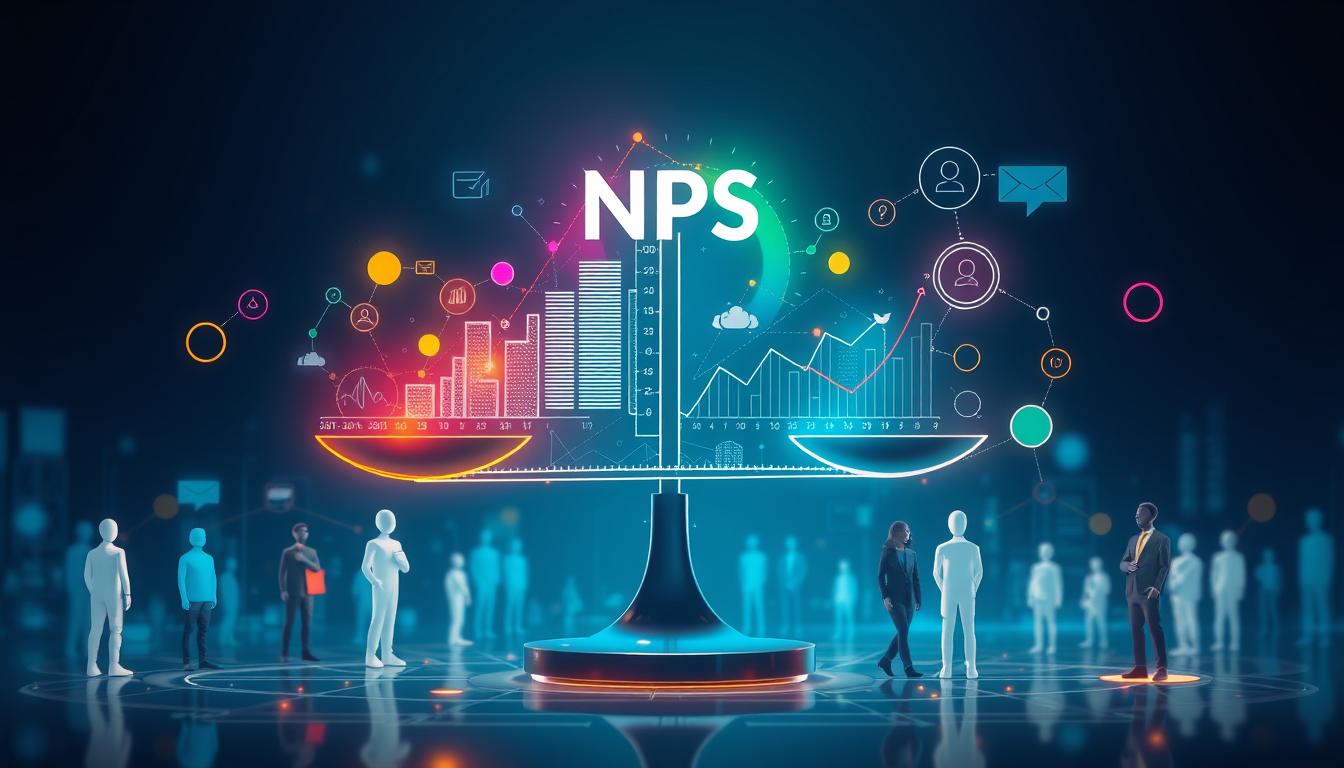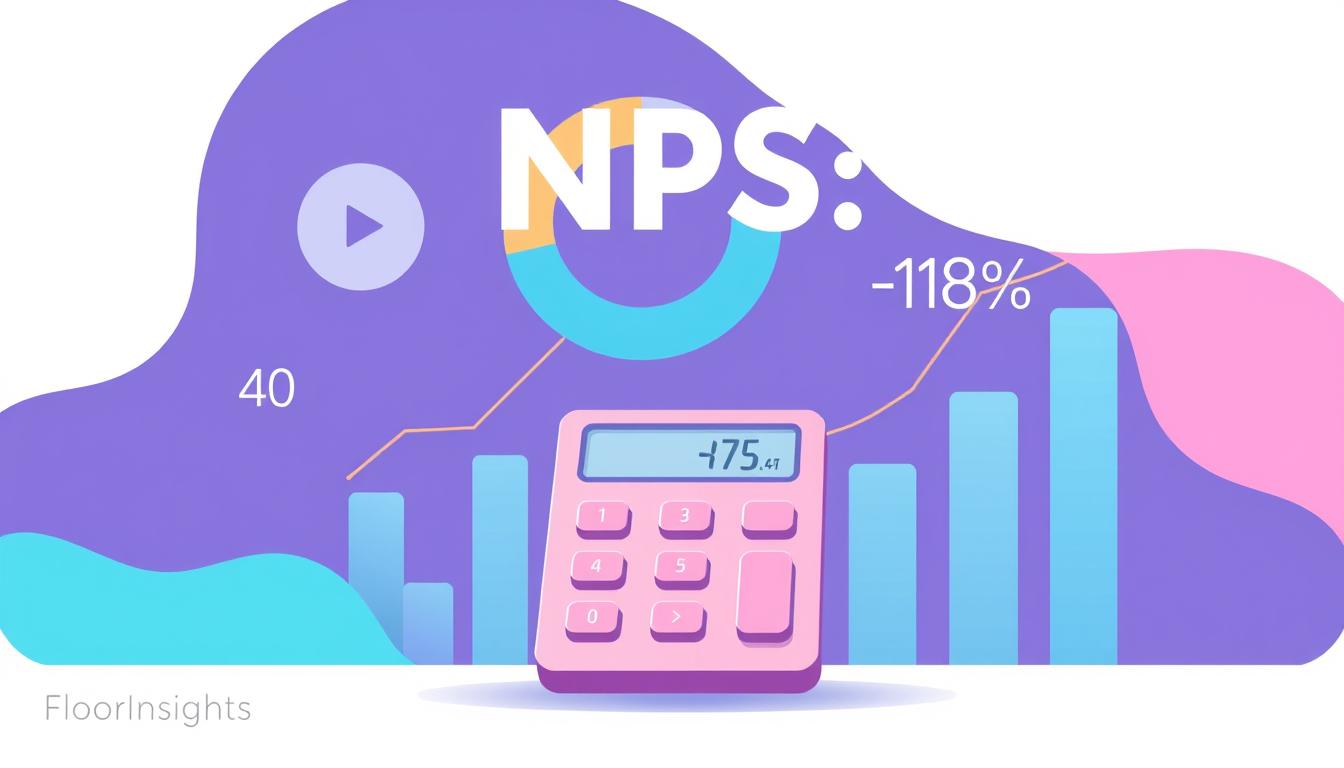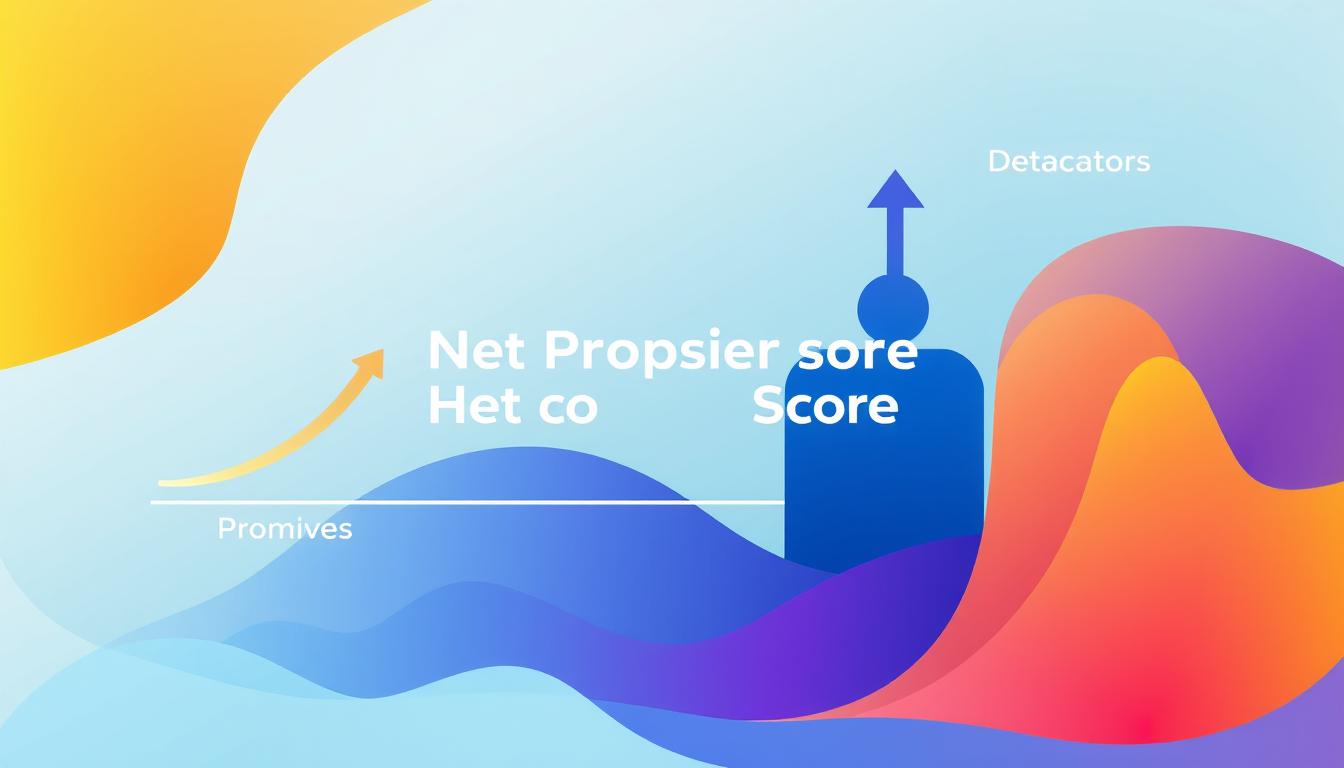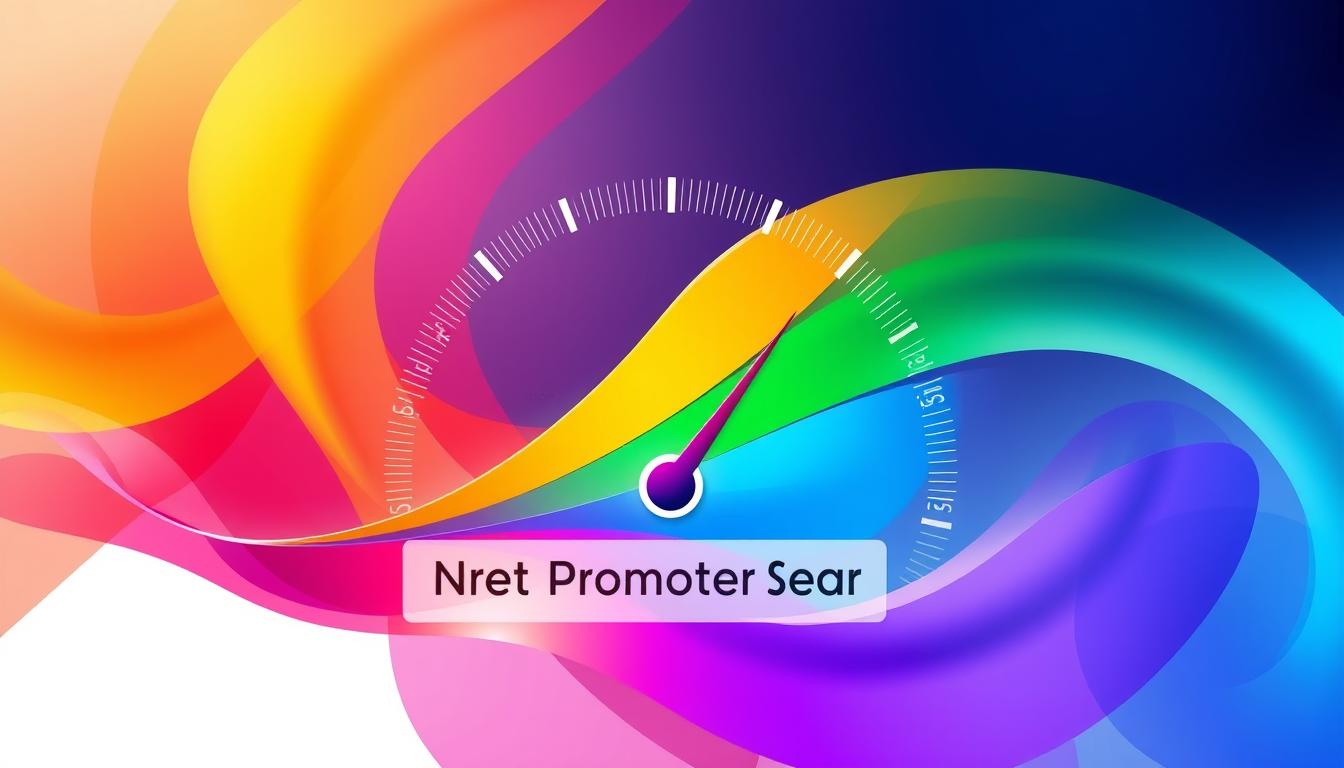In today’s competitive landscape, understanding and accurately capturing customer feedback are paramount to driving business success. One of the most effective tools we can utilize is the Net Promoter Score (NPS). This measurement not only gauges customer satisfaction but also serves as a reliable indicator of customer loyalty. By adopting efficient NPS strategies, we can bolster our customer feedback systems, ultimately leading to enhanced service delivery and accountability. Research has shown a strong correlation between NPS outcomes and overall business performance, demonstrating the importance of integrating NPS into our operational framework.
Key Takeaways
- NPS is essential for gaining accurate customer feedback.
- Implementing NPS strategies strengthens customer loyalty and satisfaction.
- Research supports the link between NPS and business performance.
- Effective NPS practices lead to improved service delivery.
- Using NPS enhances overall business growth.
Understanding the Importance of Customer Feedback
In today’s dynamic business landscape, the importance of customer feedback cannot be overstated. Feedback serves as a vital source of customer insights that help inform our strategies and enhance our offerings. By closely examining the sentiments expressed by our customers, we gain a clearer understanding of their needs, preferences, and pain points.
Utilizing these insights allows us to adjust our services and products, aligning them more closely with customer expectations. This alignment is crucial for maintaining a competitive edge, as businesses that prioritize customer feedback are often better positioned to outperform their peers in customer satisfaction ratings.
Furthermore, actively seeking and analyzing feedback fosters a culture of continuous improvement within our organization. It encourages innovation by allowing us to address the areas where we may be falling short in serving our customers. By prioritizing the importance of customer feedback, we create an environment conducive to enhancing customer satisfaction, leading to greater loyalty and long-term business success.
What is Net Promoter Score?
The Net Promoter Score (NPS) is a vital metric for understanding customer loyalty and indicating the likelihood that customers will recommend a company to others. By utilizing an easy-to-understand scale ranging from -100 to +100, the NPS provides organizations with a straightforward method to gauge customer sentiment through a simple question. This NPS overview illustrates its popularity among businesses aiming to capture an accurate picture of customer satisfaction.
Definition and Overview
The Net Promoter Score definition encompasses responses to a single survey question: “On a scale from 0 to 10, how likely are you to recommend our product/service to a friend or colleague?” Responses segment customers into three categories: promoters (scores 9-10), passives (scores 7-8), and detractors (scores 0-6). This straightforward approach allows businesses to calculate the NPS by subtracting the percentage of detractors from the percentage of promoters, resulting in a score that provides insights into customer loyalty and satisfaction.
The Role of NPS in Business Strategy
Incorporating NPS into our business strategy is key for understanding customer relationships and guiding our strategic management decisions. By recognizing who our promoters and detractors are, we can leverage this insight to enhance marketing initiatives and product development efforts. The NPS impact extends beyond customer satisfaction; it can also drive significant revenue growth by identifying areas for improvement and fostering stronger customer connections.
| Category | Description | NPS Score Range |
|---|---|---|
| Promoters | Loyal customers who are likely to recommend your brand. | 9-10 |
| Passives | Satisfied but unenthusiastic customers who might switch to competitors. | 7-8 |
| Detractors | Unhappy customers who can harm your brand’s reputation through negative word-of-mouth. | 0-6 |
The Benefits of Using an NPS Survey Platform
Utilizing an NPS survey platform brings significant advantages for our organizations. These platforms streamline the process of gathering customer feedback, allowing for rapid data collection. The automated features facilitate an efficient experience, encouraging higher participation rates in our surveys.
One of the key benefits of NPS is the availability of customized templates, which can be tailored to meet the specific needs of our business. This customization ensures that we collect the most relevant data for analysis. With built-in analysis tools, interpreting results becomes straightforward, leading to actionable insights.
- Increased response rates due to user-friendly designs.
- Real-time access to feedback boosts our ability to make decisions quickly.
- Segmentation of customer feedback allows us to target specific groups and needs.
Integrating effective customer survey tools into our operations can significantly enhance our understanding of customer sentiment, shaping our strategies for future growth and development. By leveraging the robust capabilities of an NPS survey platform, we can enhance our decision-making processes and ultimately improve customer satisfaction.
Key Components of a Successful Net Promoter System
Implementing a successful Net Promoter System requires a strategic approach characterized by two key components: effective integration with existing customer feedback systems and continuous improvement mechanisms. These components lay the foundation for capturing valuable insights and enhancing overall performance within our organization.
Integration with Customer Feedback Systems
In order to achieve a comprehensive understanding of customer sentiment, we must focus on the integration with feedback systems. By linking NPS data with various customer touchpoints such as surveys, social media interactions, and reviews, we can streamline feedback analysis and gain a holistic view of customer perceptions. This seamless integration aids in aggregating data, making it easier for us to identify trends and respond to customer needs effectively.
Continuous Improvement Mechanisms
Establishing mechanisms for continuous improvement is vital for maintaining an effective Net Promoter System. Creating a structured NPS feedback loop ensures we regularly evaluate our NPS scores and address any concerns or issues that arise. This proactive approach allows us to make informed decisions that drive enhancements in our strategies and operations, ultimately improving customer experience. Adopting a culture of responsiveness ensures that we remain aligned with customer expectations.
| Component | Description | Benefits |
|---|---|---|
| Integration with Feedback Systems | Combining NPS data with other customer insights. | Comprehensive view of customer sentiment. |
| Continuous Improvement | Regular evaluation and response to feedback. | Enhanced customer satisfaction and loyalty. |
Best Practices for Conducting an Effective NPS Survey
Implementing best practices can enhance the effectiveness of our NPS surveys significantly. Focusing on NPS survey timing and frequency of surveys is crucial in ensuring we obtain valuable feedback. Our strategies should encompass the right moments for surveys while maintaining a balanced approach to avoid overwhelming our customers.
Timing and Frequency of Surveys
NPS survey timing plays a pivotal role in response rates and the overall quality of feedback. To achieve accurate reflections of customer experiences, surveys should be conducted shortly after a relevant interaction. This strategy provides prompt insights into customer sentiments. Striking the right balance in the frequency of surveys is equally important; excessive surveying can lead to fatigue among respondents, whereas infrequent surveying risks overlooking critical insights.
Crafting the Right Questions
Crafting NPS questions effectively is fundamental in collecting actionable data. The primary question should be direct and target the likelihood of recommending our services or products. Following this, we should utilize effective survey questions to probe deeper, uncovering the reasons behind customer satisfaction or dissatisfaction. NPS question design plays a key role in encouraging open-ended responses, enabling us to pinpoint specific areas needing improvement.
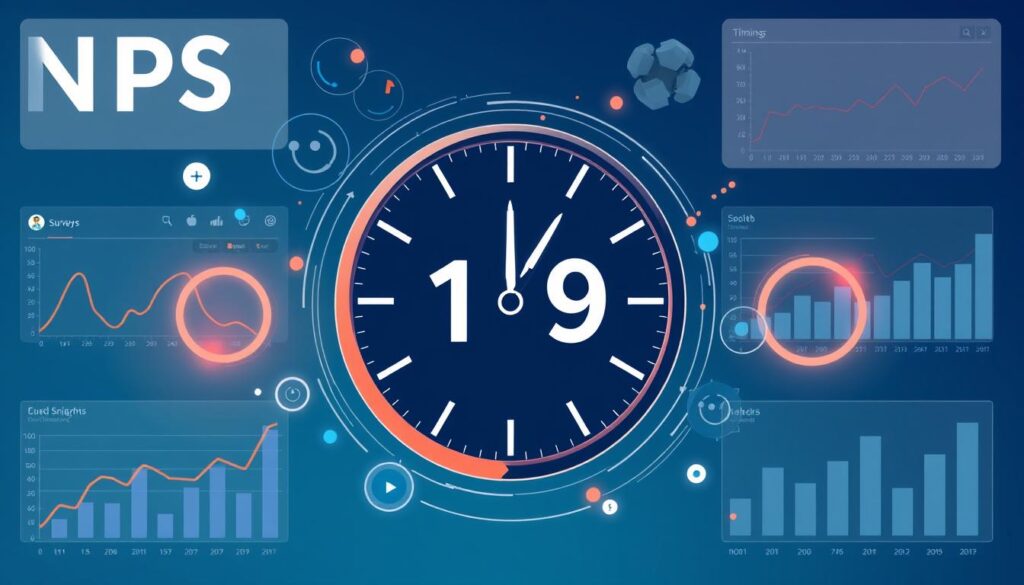
| Survey Timing | Impact on Response Rate | Recommended Frequency | Potential Issues |
|---|---|---|---|
| Immediately after purchase | High | Monthly | Survey fatigue |
| Post customer support interaction | Moderate | Quarterly | Inconsistent data |
| Customer renewal period | High | Annually | Missed insights |
By adhering to these best practices, we can ensure our NPS surveys yield the most accurate and actionable customer feedback, paving the way for continuous improvement and customer satisfaction.
Analyzing and Interpreting Net Promoter Score Data
Analyzing NPS data allows organizations to categorize respondents into three distinct groups: promoters, passives, and detractors. Each group provides unique insights into customer sentiment. Understanding these segments is crucial as it sets the foundation for interpreting NPS results and identifying the motivations behind customer feedback.
We can perform trend analysis to observe changes in customer sentiments over time. This not only highlights shifts in satisfaction but also guides our strategies in developing stronger customer relationships. By employing statistical methods, we enhance the accuracy of our interpretations, which is vital for making data-driven decisions.
It is important to delve deeper into the reasons behind scores. Open-ended feedback can reveal valuable insights that numerical data might overlook. By thoroughly analyzing this information, we can implement targeted improvements to enhance customer satisfaction and loyalty.
“Customer feedback is a gift; it teaches us how to better serve our clients and improve our offerings.”
In summary, effective analysis and interpretation of NPS data serve as the backbone of an organization’s approach to customer experience management. By focusing on analyzing NPS data, interpreting NPS results accurately, and making informed data-driven decisions, we create opportunities for continuous growth and improvement.
Leveraging Net Promoter Score Software for Insights
Utilizing NPS software effectively can elevate our understanding of customer sentiments and preferences. Through advanced analytics, we can automate data collection and enable real-time monitoring of NPS scores. This process reduces the manual workload, increases efficiency, and enhances accuracy significantly.
Automating Data Collection and Reporting
One of the pivotal advantages of adopting NPS reporting tools lies in their ability to automate data collection. By streamlining the process, we can focus on interpreting NPS results rather than being bogged down by the mechanics of data gathering. Automation empowers us to receive timely updates on customer feedback, ensuring that responses are captured and analyzed efficiently.
Visualizing Customer Feedback Trends
NPS data visualization offers an insightful way to comprehend customer feedback trends. By utilizing dashboards and graphical representations, we can identify patterns, correlations, and anomalies within the data, which may be less visible when examining raw numbers. This approach not only enhances our comprehension but also facilitates better communication of insights across teams, fostering a collaborative atmosphere to address customer feedback effectively.
Implementing Feedback for Business Growth
In our pursuit of business growth, effective implementation of feedback plays a crucial role. By focusing on converting detractors into promoters, we not only rectify negative perceptions but also strengthen our brand reputation. Understanding the concerns of dissatisfied customers through NPS feedback implementation enables us to identify key pain points and address them promptly.
Turning Detractors into Promoters
Converting detractors into promoters requires a strategic approach. We must analyze feedback, engage with these customers, and actively demonstrate our commitment to enhancing their experience. Solutions can include personalized follow-ups, incentivizing feedback, and ensuring that issues are resolved swiftly. With consistent efforts, we can transform negative experiences into positives that foster customer loyalty.
Using Insights to Enhance Customer Experience
Utilizing NPS insights effectively enhances customer experience significantly. Tailoring our strategies based on direct feedback allows us to improve service delivery and product offerings. By aligning our business processes with customer expectations, we create a pathway for enhancing loyalty. This customer-centric approach positions us for long-term success by ensuring customer satisfaction remains a top priority.
| Strategy | Focus Area | Outcome |
|---|---|---|
| Feedback Analysis | Identify Pain Points | Targeted Improvements |
| Customer Outreach | Engagement with Detractors | Improved Relations |
| Personalization | Customized Solutions | Enhanced Loyalty |
| Continuous Monitoring | NPS Trends | Adaptive Strategies |
Case Studies: Successful NPS Implementation
Organizations worldwide have embraced Net Promoter Score as a vital method for gauging customer loyalty and satisfaction. Numerous NPS success stories reveal the transformative impact of effective NPS implementation on businesses. By analyzing real-world examples, we uncover how these firms leveraged NPS data to enhance their overall performance.
For instance, a prominent Asian retail brand observed significant improvements after integrating NPS into its customer feedback process. By systematically collecting scores and feedback, the company identified key areas for improvement. This approach led to a remarkable increase in customer retention rates, showcasing the direct correlation between NPS utilization and business growth.
Similarly, an Indian software company utilized effective NPS implementation to refine its product offerings. By analyzing customer insights through NPS surveys, the organization adapted its services to better meet client expectations. This case demonstrates how ongoing engagement with customer feedback can lead to innovation and increased market competitiveness.
In our exploration of case studies, we find that these examples embody essential strategies, such as:
- Timely collection of feedback to ensure relevance.
- In-depth analysis of scores to offer actionable insights.
- Engagement with customers post-survey to foster loyalty.
Through these actions and more, firms across industries set benchmarks for others aiming to harness the power of NPS as a tool for sustained success.
Challenges in Accurate NPS Measurement
Measuring NPS accurately presents various challenges that we must address to ensure reliable outcomes. One major issue includes NPS measurement challenges which arise from the inherent biases in the survey process. Understanding these biases is essential for adjusting our approach to feedback collection.
Moreover, sample representation significantly influences our ability to gather accurate data collection. We should target diverse customer segments to avoid skewed results, as homogenous samples may not provide a comprehensive view of our customer base. Attention to these factors can help us refine our methodology.
Response rates also play a crucial role in obtaining credible data. A low response rate can compromise our findings, making it vital to implement strategies that encourage participation. Understanding how survey biases affect our outcomes empowers us to craft better surveys and engage our customers more effectively. By openly acknowledging these challenges, we can enhance our data collection practices and overall NPS accuracy.
| Challenge | Description | Mitigation Strategies |
|---|---|---|
| NPS Measurement Challenges | Inherent biases in survey responses can lead to distorted results. | Regularly review the survey design and adjust for biases. |
| Accurate Data Collection | Sample representation affects the reliability of data. | Ensure diverse customer selection to represent various segments. |
| Survey Biases | Influence of question phrasing and survey format on responses. | Test different formats and questions to identify effective structures. |
| Response Rates | Low participation can undermine the validity of findings. | Implement follow-up reminders and incentives for increased engagement. |
Conclusion
In summary, the effective implementation of the Net Promoter Score (NPS) is vital for understanding customer sentiment and enhancing the accuracy of feedback. By focusing on clear communication and best practices, we can harness the summary of NPS benefits to drive our strategies forward. The importance of accurate feedback cannot be overstated, as it serves as a foundation for informed decision-making and customer relationship management.
As we work towards business growth through NPS, it’s essential to continuously engage with our customers and utilize technology to streamline feedback processes. By doing so, we not only foster lasting relationships but also elevate customer experiences that align with their needs and expectations. Embracing the insights gleaned from NPS will empower us to adapt and innovate, ultimately positioning our businesses for future success.
In conclusion, as we enhance our NPS strategies, we open doors to greater loyalty and satisfaction among our clients. This ongoing journey towards excellence ensures that we remain responsive and relevant in an ever-evolving market. Let us commit to making the most of customer insights to propel our organizations to new heights.
FAQ
What is the Net Promoter Score and why is it important?
The Net Promoter Score (NPS) is a metric that measures customer loyalty and satisfaction by asking customers how likely they are to recommend a business to others. It is important because high NPS scores correlate with increased customer retention and overall business growth.
How can we improve our Net Promoter Score measurement?
We can improve our NPS measurement by ensuring that our survey questions are clear and focused, optimizing the timing and frequency of surveys, and using reliable NPS survey platforms to streamline data collection.
What are the benefits of using an NPS survey platform?
Utilizing an NPS survey platform offers numerous benefits, including automation of the survey process, tailored templates for effective questioning, improved data analysis, and real-time access to customer feedback. This helps us make better data-driven decisions.
How do we analyze and interpret NPS data?
To analyze and interpret NPS data, we categorize respondents into promoters, passives, and detractors. Understanding the reasons behind their scores helps us identify trends and areas for improvement, enabling us to take proactive measures to enhance customer satisfaction.
What strategies can we use to turn detractors into promoters?
We can turn detractors into promoters by actively engaging with them, understanding their pain points through follow-up questions, and implementing changes based on their feedback. Demonstrating a commitment to improving their experience can foster loyalty.
How does continuous improvement factor into a successful Net Promoter System?
What are some common challenges in accurate NPS measurement?
Common challenges in accurate NPS measurement include survey biases, challenges in sample representation, and low response rates. Acknowledging these issues helps us refine our approach and implement strategies that enhance data reliability.
How can we leverage Net Promoter Score software for better insights?
By using NPS software, we can automate data collection, streamline reporting, and visualize customer feedback trends. This allows us to quickly identify patterns in customer sentiment and act accordingly to enhance service delivery.
Related Posts
- Using NPS to Identify and Reward Your Most Loyal Customers – NPS for Customer Advocacy and Loyalty
- The Future of NPS: Emerging Trends for 2025 and Beyond – Future Trends in NPS
- NPS in Software-as-a-Service: Measuring Customer Satisfaction – NPS in the Technology Industry
- How to Use NPS Feedback Loops to Enhance Customer Experience – NPS and Customer Feedback Loops
- How to Use NPS to Identify Pain Points in Telecom Services – NPS in Telecommunications
- How NPS Feedback Drives Innovation in Technology – NPS in the Technology Industry
- How Tesla Uses NPS to Improve Customer Experience
- How SMBs Can Use NPS to Improve Their Online Reputation – NPS for Small and Medium Businesses (SMBs)

